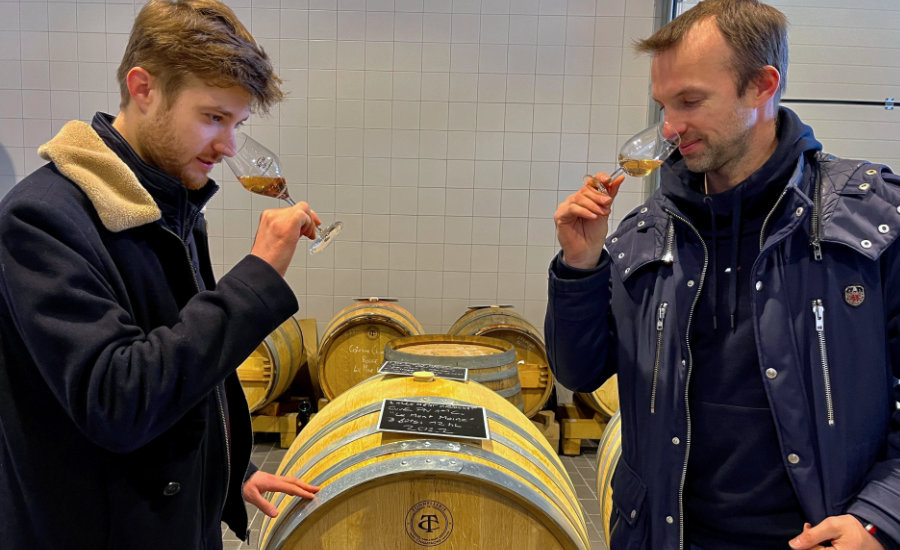
 Champagne Lallement Massonnot à Coulommes-la-Montagne
Champagne Lallement Massonnot à Coulommes-la-Montagne
Reveal a unique Character
Nature
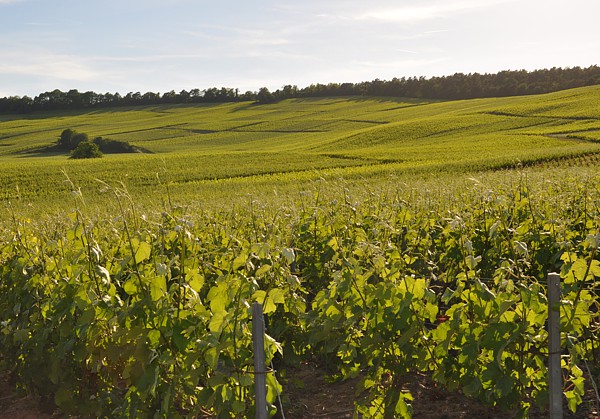
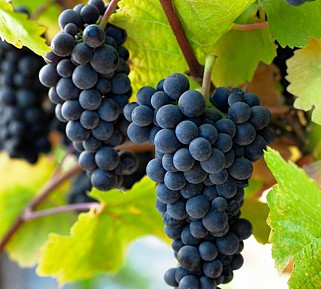
Premier-Cru-classified vineyards
Our estate now consists of 13 acres of vineyards mostly classified as Premier Cru pledge of a terroir with great potential.
Our vineyards are all situated in the region of the Montagne de Reims, in the villages of Coulommes-la-Montagne, Pargny-lès-Reims, Saint Euphraise and Gueux.
They benefit from the climate specific to the region of Champagne, both oceanic and continental. The result is an ideal amount of rain, low to medium exposure to sunlight, and cold temperatures in winter, which forces the vines to adapt.
Three types of grapes
Our magnificent terroir is located at the western end of the Montagne de Reims, with a diversity of clay to sandy soils.
The Meunier is king there and occupies 4 hectares on our Estate nearly 75% of the surface area. It gives mainly supple and fruity cuvées.
Pinot Noir (0.7 hectares) and Chardonnay (0.6 hectares) complete our grape varieties. The first brings body and power to the blend and the second finesse and liveliness. Both have a great aptitude for aging for those who have the patience to wait for them!
In our magnificent region of Champagne, we have all the elements of nature necessary for the production of exceptional champagnes.
Respecting nature
For more than 30 years, no insecticide has been used in our vines.
Biodiversity (insects, animals, plants, trees, micro-organisms, and especially earthworms, etc.) is a precious ally that we cultivate by managing the plant cover of the soil, and by promoting the storage of carbon in it in the form of organic matter, itself a source of fertility and vigor for our vines.
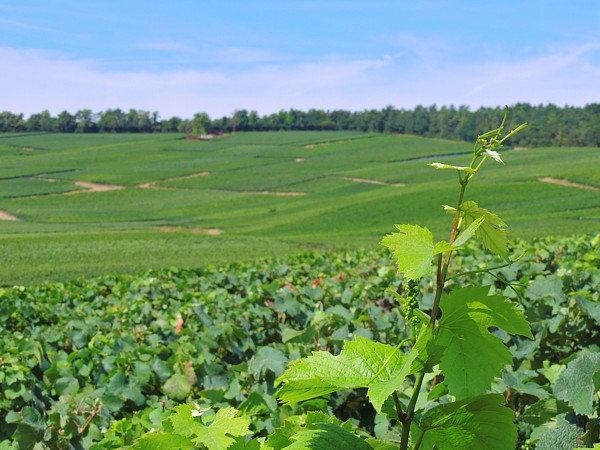
The workforce
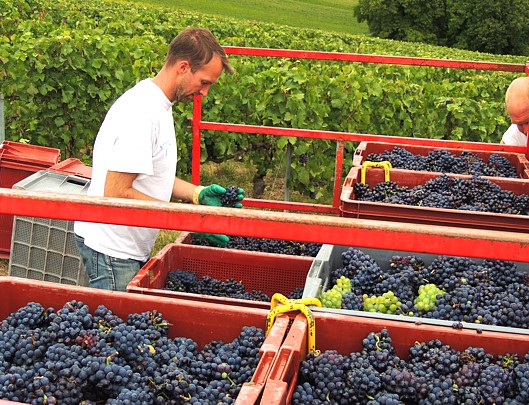
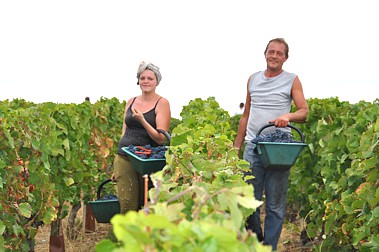
The strenght of the collective work
Sharing experience and training are the foundation of our pioneering approach in soil conservation viticulture.
With several Champagne winegrower friends, we share the results of our respective trials (choice of cover seeds, tree species, equipment) to best avoid failures and replicate what works, and organize technical training to progress (permaculture, soft pruning...) with our employees.
Meticulous vendanges
September is harvest time - or 'vendanges'. As the harvest has to be completed within a short amount of time, we get help from a dozen seasonal workers. Once the grapes are ripe, they have to be manually harvested and pressed as we go along, in order to avoid the colouring of the beautiful pale golden juice by the skin of the black grapes.
Only one part of our grapes is bottled for the sale of our Champagne Lallement Massonnot. The rest is sold to the "Grandes Maisons de champagne" via the cooperative of Coulommes-Vrigny. They are grateful for the quality of the work performed all year. Our grapes eventually end up in the vats of the Maisons Moët et Chandon and Bollinger amongst others.
The most promising plots have been isolated since 2022 for the production of our special cuvée in oak barrels.
When opening a bottle of Champagne Lallement Massonnot, you are readying yourself to taste the result of a long and delicate process.
Controlled vinification
Pressing the grapes
Throughout the harvest, our grapes are regularly delivered to the cooperative of Coulommes-Vrigny where they are weighed and directed to various presses, under the watchful eye of the cooperative's chairman who checks their quality. They are then pressed separately in accordance with their cépage and cru.
Alcoholic fermentation
The obtained juice, also known as 'must', is sown with Champenoise yeasts for the natural sugar of the grapes to transform into alcohol. The obtained wine is light and contains 11% of alcohol.
Blending
We are part of the 'récoltant-expéditeurs', ie. grower-and-sellers of the Champagne region. After tasting the wine out of each vat, we meet and decide of the shared blends of the cooperative. The particularity of our cooperative is that we are all free to make our own blends and vinification, for a special cuvée for example.
The drawing
Sugar and yeast are added to the blend during the 'drawing' stage (bottling). Then the bottles are made air-tight and topped with a temporary cap.
The foaming stage - Prise de mousse
As soon as the wine is bottled, the yeasts start transforming the sugar into alcohol by releasing carbon dioxide. The bottle being air tight, the gas cannot seep out and therefore dissolves into the wine, creating the fine bubbles which make champagne naturally effervescent. The foaming is complete once the yeasts have died and rest on the side of the bottle, forming the lees.
A long maturing process
The bottles are placed in a lying position, in the dark, so that time can work its magic. During this ageing period, while the bottles are set on racks, the yeasts slowly dissolve, releasing proteins and amino acids, adding complexity to the champagne.
Patience
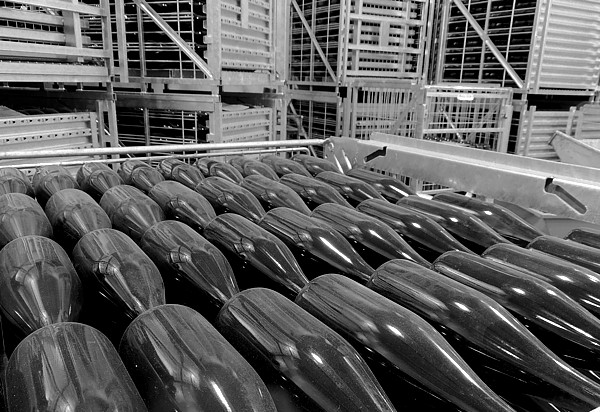
Complexity and maturity
At our cooperative, each winegrower chooses the amount of time they wish to age their wine in the cellar. We have made the choice to store our wines for 36 months on average, although regulations allow the sale of champagne after 15 months of ageing only. We made this deliberate choice of a longer ageing period for more complexity and maturity, as for all other great wines.
Riddling
A few months before champagne can be sold, the riddling phase comes in. The bottles are progressively brought to a vertical position so that the lees may slide down into their neck. The sediment is later eliminated during the degorgement phase - the last step of champagne making.
Home-made liqueur
Our liqueur adjusts the dosage and defines the type of champagne (demi-sec, brut, etc.). We make our own liqueur by dissolving granulated cane sugar into some carefully selected wine.
During degorgement, we add a certain quantity of liqueur to our champagne and cork the bottles for the last time before finally wiring them.
Pretty labelling and some more patience are necessary still, before our champagne is ready to be enjoyed.


